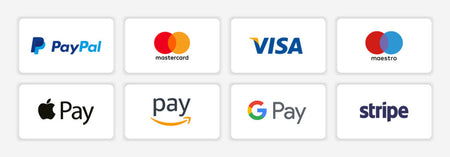Descrição
How to include a computer course on your resume
Having computer skills is essential these days, since technology is present in practically all professional areas. Therefore, it is important to highlight the computer courses you have taken on your resume. In this blog, we will show you how to do this clearly and objectively.
1. Highlight the computer course in the field of training
Right at the beginning of your resume, in the field of academic training, mention the computer course you took. Use the tag to highlight the name of the course. For example:
Advanced Computer Course - XYZ Institute of Technology
2. Detail the skills acquired
In addition to mentioning the course, it is important to detail the skills you acquired during the computer course. Use the
tag to create paragraphs and the tag to highlight skills. For example:Skills acquired:
- Proficiency in the Office suite (Word, Excel, PowerPoint)
- Notions of Java programming
- Knowledge of hardware maintenance
3. Organize the information in a table
To make it easier to read and organize the information about the computer course, use a table. Use the
, , , tags to create the table. For example:| and |
|---|
| Course | Institution | Year of completion |
|---|---|---|
| Advanced Computer Science Course | XYZ Institute of Technology | 2020 |
Conclusion
Including a computer science course on your resume is a way to highlight your technological skills and increase your chances of getting a job opportunity. Use the HTML tags mentioned in this blog to organize and highlight information clearly and objectively.
Remember to always update your resume with the courses and skills most relevant to the position you are applying for. Good luck!
How to include a computer course on your resume
Having computer skills is essential these days, since technology is present in practically all professional areas. Therefore, it is important to know how to highlight these skills on your resume. In this article, we will show you how to include a computer course on your resume efficiently.
Why include a computer course on your resume?
By including a computer course on your resume, you show recruiters that you have technical skills relevant to today's job market. Furthermore, computer science is a field that is constantly evolving, and having knowledge in this field can open doors to job opportunities in various areas.
How to highlight the computer science course on your resume?
To highlight the computer science course on your resume, follow the tips below:
- Include a specific title: In the academic background field, include a specific title for the computer science course, such as "Advanced Computer Science Course" or "Excel Certification". This will catch the attention of recruiters right away.
- Highlight the skills acquired: In the course description, mention the main skills you acquired, such as knowledge of the Office package, programming, graphic design, among others.
- Mention completed projects: If you participated in projects during the computer science course, mention them on your resume. This shows that you have put into practice the knowledge you have acquired.
- Include certifications: If you If you have obtained certifications related to your computer science course, be sure to mention them on your resume. This shows that you have dedicated yourself to improving your skills.
Sitelinks
Sitelinks are additional links that appear below a website's main result in search results. They help users navigate directly to specific pages on the site. In the case of a computer science resume, sitelinks can direct to specific sections, such as "Academic Background", "Courses and Certifications" and "Technical Skills".
Reviews
Reviews are evaluations made by users about a specific product or service. In the case of a computer science course, it is a good idea to include testimonials from people who have already taken the course and had a positive experience. This can be done by highlighting quotes or excerpts from reviews on your resume.
People also ask
"People also ask" are frequently asked questions by users in search results. In the case of an IT resume, some common questions might be: "What are the main IT skills I should include on my resume?", "How can I highlight my IT degree on my resume?" and "Which certifications are valued in the job market?" It's a good idea to include these questions and answer them clearly and objectively on your resume.
Knowledge panel
The Knowledge panel is a SERP feature that displays additional information about a researched entity or topic. In the case of a computer science resume, the Knowledge Panel can display information about the course taken, such as educational institution, course load, syllabus and certifications obtained.
FAQ
The FAQ (Frequently Asked Questions) is a section where users' most frequently asked questions are answered. In the case of a computer science resume, it is interesting to include a FAQ section with common questions about the course taken, the skills acquired and the certifications obtained. This makes it easier for the recruiter to understand and can generate more interest in your profile.
Top stories
Top stories is a SERP feature that displays the most relevant news about a given topic. In the case of a computer science resume, it is interesting to include recent news about technological advances in the area, new trends and the demand for professionals with computer skills. This shows that you are up to date and aware of the latest trends in the market.
Recipes
The Recipes SERP feature is aimed at results related to culinary recipes. Therefore, it is not applicable to the subject of the computer science resume.
Find results on
Find results on is a SERP feature that allows the user to find results on a specific website. In the case of the computer science resume, it is interesting to include links to projects developed during the course, such as websites, applications or systems. This allows the recruiter to better understand your skills and practical experience.
See results about
See results about is a SERP feature that displays results related to a specific topic. In the case of the computer science resume, it is interesting to include links to articles, tutorials or discussion forums on relevant topics in the area, such as programming, information security or data analysis. This shows that you are constantly seeking knowledge and staying up to date.
Related searches
Related searches are related searches made by users in search results. In the case of a computer science resume, some related searches could be: "How to include computer science courses in a resume?", "What are the most valued certifications in computer science?" and "What are the main computer skills sought by companies?". It is interesting to include these related searches and answer them clearly. ara and objective in the resume.
In short, including the computer course in the resume is essential to highlight your technical skills and increase your chances of getting a job. Use the SERP features elements and mechanisms mentioned in this article to make your resume more attractive and complete. Remember to always update your resume with new courses, certifications and projects carried out in the computer area.
What is how to put a computer course on the resume
When it comes to writing a resume, it is important to highlight your skills and knowledge relevant to the desired position. In today's world, where technology plays a fundamental role in almost every area, having computer knowledge is essential. In this blog, we will discuss what a computer course is and how you can highlight it on your resume.
What is a computer course?
A computer course is a training course that aims to train students in skills related to information technology. These courses cover a wide range of topics, from computer basics to advanced programming and network administration. They are designed to provide students with the skills they need to deal with the technological challenges of the modern world.
How to put a computer course on your resume?
Now that you understand what a computer course is, it’s important to know how to highlight it on your resume. Here are some tips to help you:
- Include a skills section: Create a specific section on your resume to list your computer skills. This allows recruiters to quickly identify your technical competencies.
- Mention relevant courses: List any computer courses you’ve completed or are currently taking. Be sure to include the name of the course, institution, and completion dates.
- Highlight your achievements: If you have earned any certifications or awards related to IT, be sure to mention them. This demonstrates your commitment and highlights your accomplishments in the field.
- Describe your skills: In addition to listing your courses, describe the specific skills you acquired during your IT degree. This helps recruiters better understand your technical skills.
By following these tips, you will be effectively highlighting your IT degree on your resume, increasing your chances of being selected for interviews and job opportunities.
Related SERP Features:
When searching for the topic "how to put IT degree on resume", you may find several related SERP features. Here are some of them:
- Sitelinks: Additional links displayed in search results that direct to specific pages on the site.
- Reviews: User reviews and opinions about computer science courses and educational institutions.
- People also ask: Frequently asked questions related to the topic, such as "What are the best computer science courses?" or "How important is a computer course on your resume?".
- Knowledge panel: An information panel displayed on the right side of the search results, providing details about the subject searched.
- FAQ: Frequently asked questions answered directly in the search results.
- Top stories: Recent news related to computer and technology courses.
- Recipes: Recipes for dishes related to the topic.
- Find results on: Suggestions for other related topics to search.
- See results about: Li nks for search results on related topics.
- Related searches: Related searches commonly made by users.
We hope this blog has provided you with useful information about what a computer science course is and how to highlight it on your resume. Remember to tailor your resume to the job requirements and good luck in your search for career opportunities!
What is the best computer science course to include on your resume?
When it comes to adding a computer science course to your resume, it is important to choose the one that best fits your needs and career goals. With so many options available, it can be difficult to decide which is the best. In this article, we will explore some popular options and discuss the benefits of each.
Featured Computer Science Courses
There are many computer science courses available, but some stand out for the quality of their content and their recognition in the market. See below some options:
- Programming Course: Learning to program is a highly valued skill in the job market today. There are several programming courses available, from the basics to the most advanced. Some examples are: Python, Java, C++ and JavaScript.
- Database Course: With the exponential growth in the amount of data generated by companies, having knowledge of databases is a competitive advantage. Courses such as MySQL, Oracle and SQL Server are highly sought after.
- Graphic Design Course: If you are interested in working with visual creation, a graphic design course may be a great option. Learning to use tools like Photoshop, Illustrator, and InDesign can open doors to opportunities in the field.
Benefits of adding a computer course to your resume
Adding a computer course to your resume can bring several benefits to your career. Some of them include:
- Increased employability: Having computer skills is essential in practically all professional areas today. By adding a computer course to your resume, you increase your chances of getting a job or a promotion.
- Constant updating: The computer field is constantly evolving, and it is important to stay up to date with new technologies and trends. By taking a computer course, you stay up to date and prepared for the challenges of the market.
- Skills development: Computer courses not only teach technical knowledge, but also help develop skills such as problem-solving, logical thinking and teamwork.
Sitelinks
Sitelinks are additional links that appear below the main result of a website in the search results. They provide quick access to relevant internal pages. When searching for computer courses, you can find sitelinks to websites of renowned educational institutions that offer these courses.
Reviews
Reviews are evaluations made by users about products or services. When searching for computer courses, you can find reviews from students who have already taken these courses. These reviews can help you decide which course to choose.
People also ask
People also ask is a SERP feature that shows questions related to the search term. When searching for computer science courses, you may come across questions like "What is the best programming course?" or "What are the most popular computer science courses?". These questions can provide additional insights into the topic.
Knowledge panel
The knowledge panel is an information box that appears on the right side of the search results. It provides quick and relevant information about the search term. When searching for computer courses, you can find a knowledge panel with information about the different types of courses available and their characteristics.
FAQ
FAQ (Frequently Asked Questions) are frequently asked questions about a particular subject. When searching for computer courses, you can find an FAQ section on educational institution websites or discussion forums. These questions and answers can help clarify common doubts about the courses.
Top stories
Top stories are recent and relevant news about the subject searched. When searching for computer courses, you may find news about new technologies, trends in the field, or success stories of professionals who have taken computer courses.
Recipes
Recipes are SERP features related to cooking recipes and are not relevant to the subject of computer courses.
Find results on
Find results on is a SERP feature that shows search results on a specific website. When searching for computer courses, you may find this feature with options such as "Find results on Udemy" or "Find results on Coursera". This can help direct your search to reliable websites that offer computer courses.
See results about
See results about is a SERP feature that shows search results related to a specific term. When searching for computer courses, you may find this feature with options such as "See results about programming courses" or "See results about graphic design courses". This can help you narrow down your search and find more specific information about the different types of computer science courses.
Related searches
Related searches are terms related to the topic you’re searching for. When searching for computer science courses, you might come across terms like “online computer science courses,” “free computer science courses,” or “computer science courses for beginners.” These terms can help you expand your search and find additional course options.
In short, when choosing the best computer science course to put on your resume, it’s important to consider your needs and career goals. Researching the available options, reading reviews, exploring SERP features, and searching for relevant information are all essential steps to making an informed decision. Remember that continuous learning and constant updating are essential in the IT field, so always be open to new learning opportunities.
What is the purpose of a computer course and how to include it on your resume
We currently live in a digital age where technology is present in practically every area of our lives. In this context, having basic computer knowledge has become essential to stand out in the job market. In this article, we will explore the importance of a computer course and how to include it efficiently on your resume.
Why take a computer course?
A computer course offers a series of benefits for professionals in all areas. Here are some reasons why it is worth investing in this training:
- Mastery of technological tools: The computer course provides the knowledge necessary to efficiently use the main software and applications used in the workplace.
- Increased productivity: With computer skills, you will be able to perform tasks more quickly and efficiently, which contributes to increased productivity at work.
- Adaptation to changes: Technology Technology is constantly evolving, and those who don't keep up with these changes end up falling behind. A computer course helps you stay up to date and prepared to deal with the latest developments in the market.
- Competitiveness in the job market: Having computer skills is a competitive advantage that can open doors in several professional areas. Many companies value candidates who have technological skills.
How to include a computer course on your resume?
Now that you understand the importance of a computer course, it's time to learn how to include it appropriately on your resume. Check out some tips:
- Highlight the skills acquired: In the skills or competencies section, mention the main skills you developed during the computer course, such as knowledge of the Office package, programming, graphic design, among others.
- Highlight the certification: If you obtained any certification related to the computer course, mention it on your resume. This shows that you have a recognized level of knowledge.
- Practical experience: If you applied your computer knowledge in projects or internships, mention this experience on your resume. This shows that you have practical experience and know how to use computers in the workplace.
- Keep yourself constantly updated: Include in your resume that you are always seeking updates and new knowledge in the computer area. This shows that you are a professional committed to staying up to date.
By following these tips, you will be effectively highlighting the computer science course on your resume, increasing your chances of landing professional opportunities.
Sitelinks
Sitelinks are additional links displayed in search results that direct users to specific pages on a website. They make navigation easier and can direct users to more relevant information about the computer science course.
Reviews
Reviews are assessments made by people who have already taken the computer science course. They can provide insights into the quality of the course and help interested parties make an informed decision about choosing the course.
People also ask
The "People also ask" section displays questions related to the topic searched. Some examples of questions related to the computer science course might be: "What are the benefits of taking a computer science course?" or "What are the main skills acquired in a computer science course?".
Knowledge panel
A knowledge panel is an information box displayed in search results that provides a summary of the topic searched. In the case of a computer science course, the knowledge panel can present information about the importance of the course, the skills acquired, and related career opportunities.
FAQ
A FAQ (frequently asked questions) section can be included in the blog to answer the most common questions about the computer science course. This helps readers get relevant information quickly and easily.
Top stories
The "Top stories" section displays the latest news related to the searched topic. In the case of a computer science course, this section can present news about trends and advances in the technology field.
Recipes
The "Recipes" section is normally used to display culinary recipes. However, in the context of a computer science course, this section can be adapted to present "recipes" on how to stand out in the technology field, such as tips for improving skills and gaining professional opportunities.
Find results on
The "Find results on" section can be used to direct readers to ores to websites or platforms where they can find more information about the computer course, such as educational institutions, online courses or discussion forums.
See results about
The "See results about" section can be used to display results related to the computer course, such as news, articles, videos or tutorials.
Related searches
The "Related searches" section displays searches related to the searched topic. Some examples of searches related to the computer course could be: "Best computer courses", "How to choose a computer course" or "Where to take a computer course".
In short, the computer course is essential nowadays and can bring countless benefits to your career. By including it appropriately in your resume, you will be demonstrating your technological skills and increasing your chances of landing professional opportunities. Don't forget to invest in this training and stay up to date with the latest developments in the field!
Who can take a computer course and how to include it on their resume
Having computer skills is essential these days, regardless of the field of work. Technology is present in practically all sectors, and knowing how to use digital tools is a differentiator in the job market. In this article, we will talk about who can take a computer course and how to highlight this skill on their resume.
Who can take a computer course?
A computer course is recommended for anyone who wants to acquire basic or advanced knowledge in the field. There are no restrictions on age, academic background or professional experience. From students looking to improve their skills to professionals who want to update their knowledge, everyone can benefit from a computer course.
In addition, companies can also invest in computer training for their employees, aiming to improve productivity and efficiency in the use of technological tools.
How to include a computer course on your resume?
To highlight a computer course on your resume, it is important to follow some tips:
- Include in the "Academic Background" section: Add the name of the course, the institution where it was taken and the duration. If the course is certified, mention this as well.
- Highlight the skills acquired: In addition to mentioning the course, it is interesting to list the main skills developed during the training. For example: knowledge of the Office package, programming skills, graphic design skills, among others.
- Use relevant keywords: When describing the computer course, use keywords related to the desired field of activity. This will help your resume to be found by recruiters who perform specific searches.
It is important to note that, if you have taken several computer courses, select the most relevant ones to include in your resume. It is not necessary to list all the courses, just those that are most relevant to the position in question.
Sitelinks
Sitelinks are additional links that appear below the main result of a website in search engines. They help users navigate directly to specific pages on the website. In the case of a blog about computer courses, sitelinks can direct to related pages, such as "Programming courses", "Graphic design courses", "Office package courses", among others.
Reviews
Reviews are evaluations made by users about a certain product or service. In the case of a computer course, it is interesting to include testimonials from students satisfied with the training. These reviews can be added to a specific section of the blog, highlighting the quality and reliability of the course. relevance of the course.
People also ask
The "People also ask" section displays frequently asked questions related to the researched topic. In the case of this blog, some questions that may appear are: "What are the benefits of taking a computer course?", "What is the average duration of a computer course?" and "What are the main skills acquired in a computer course?". It is interesting to answer these questions throughout the article, providing relevant information to readers.
Knowledge panel
The knowledge panel is an information box that appears on the right side of the search results. It displays relevant data about the researched topic. In the case of this blog, the knowledge panel can show statistics about the importance of IT in the job market, data about the demand for professionals with knowledge of technology, among others.
FAQ
The FAQ (Frequently Asked Questions) section is a great way to provide direct and concise answers to the most common questions from readers. In the case of this blog, some frequently asked questions might be: "How long does it take to learn IT?", "What is the best online IT course?" and "What are the options for free IT courses?".
Top stories
The "Top stories" section displays the most recent and relevant news on the subject searched. In the case of this blog, it is interesting to include updated information about the job market in the IT area, new technologies and trends in the sector.
Recipes
The "Recipes" section is generally used to display culinary recipes, but it can be adapted for other types of content. In the case of this blog, the "recipes" can be used to provide step-by-step instructions on how to stand out in the job market after taking an IT course, tips for putting together a digital portfolio, among others.
Find results on
The "Find results on" section displays links to other websites related to the researched topic. In the case of this blog, the links can direct to websites of educational institutions that offer IT courses, discussion forums on the subject, among others.
See results about
The "See results about" section displays links to other search results related to the researched topic. In the case of this blog, the links can direct to other articles about computer courses, tips on how to stand out in the job market in the technology area, among others.
Related searches
The "Related searches" section displays search terms related to the topic searched. In the case of this blog, some terms that may appear are: "online computer courses", "free computer courses", "how to learn computer skills from scratch", among others. It is interesting to include these terms throughout the article to improve the relevance and visibility of the blog in search engines.
In short, anyone can take a computer course and it is important to highlight this skill on your resume. Using the above elements and SERP features, you can create an informative and relevant blog on the subject, providing useful information to your readers and increasing your visibility in search engines.
How long does a computer course last and how do you include it on your resume?
If you are considering taking a computer course to improve your skills or even to add a new qualification to your resume, it is important to understand the duration of the course and how to highlight it effectively on your resume. In this article, we will cover these topics and provide some useful tips for you.
Duration of a computer course
The duration of a computer course can vary depending on the level of knowledge you want to acquire and the type of course you choose. There are basic, intermediate and advanced courses. each with a different workload.
Basic courses usually have an average duration of 40 to 60 hours, while intermediate courses can range from 80 to 120 hours. Advanced courses can last from 120 to 200 hours, depending on the educational institution and the program content.
It is important to note that these are only estimates and that the actual duration of the course may vary depending on the institution and the specific program you choose.
How to include a computer course on your resume
When adding a computer course to your resume, it is important to highlight the relevant information clearly and concisely. Here are some tips to help you with this.
Estimar frete
Payment & Security

Featured collection





















![Curso de Angular e NodeJS - O Guia da Pilha MEAN [Edição 2023] - IBRATH Instituto Brasileiro de Terapias Holísticas teste011020230809](http://enciclopedia.paginasdabiblia.com/cdn/shop/products/a19556.png?v=1699935448&width=1024)




![Curso de Docker & Kubernetes: O Guia Prático [Edição 2023] - IBRATH Instituto Brasileiro de Terapias Holísticas teste011020230809](http://enciclopedia.paginasdabiblia.com/cdn/shop/products/a19570.png?v=1699935525&width=1024)





















Dúvidas Gerais
Após a confirmação do pagamento, você receberá um e-mail com todas as instruções para acessar seus cursos. O e-mail incluirá um link para a plataforma de ensino, onde você poderá fazer login utilizando suas credenciais cadastradas no momento da compra. Caso seja um curso em formato de arquivo para download, o mesmo estará disponível na área do aluno e poderá ser acessado diretamente pelo link enviado. Se você não receber o e-mail de acesso em até 24 horas, verifique sua caixa de spam ou entre em contato com nossa equipe pelo e-mail suporte@amentil.com.br.
Após a confirmação do pagamento, seu pedido será processado e enviado para o endereço cadastrado. Você receberá um e-mail com os detalhes do envio, incluindo o código de rastreamento para acompanhar a entrega. Trabalhamos com transportadoras confiáveis e os prazos variam de acordo com o método de envio escolhido e sua localização. É importante garantir que o endereço de entrega esteja correto para evitar atrasos. Caso tenha dúvidas ou problemas com a entrega, nossa equipe de suporte está à disposição pelo e-mail suporte@amentil.com.br.
Você pode tirar dúvidas diretamente com nossa equipe de suporte por diversos canais:
- E-mail: Envie sua pergunta para suporte@amentil.com.br, e nossa equipe responderá em até 2 dias úteis.
- Telefone: Ligue para +55 (48) 1234-5678, disponível de segunda a sexta, das 9h às 18h.
- WhatsApp: Envie uma mensagem para +55 (48) 91265-4321 e receba atendimento rápido e prático.
- Formulário de Contato: Preencha o formulário disponível em nosso site na página Contato.
- Redes Sociais: Você também pode enviar suas dúvidas pelo Instagram ou Facebook em @amentil.sa.
Estamos sempre prontos para ajudar!
Reembolso e garantias
O prazo de reembolso pode variar dependendo da forma de pagamento utilizada:
- Cartão de Crédito: O estorno será realizado em até 7 dias úteis após a aprovação do reembolso, mas o crédito poderá aparecer na sua fatura em um prazo de 30 a 60 dias, conforme a política da operadora do cartão.
- Boleto Bancário ou Transferência: O valor será devolvido via depósito em conta bancária em até 7 dias úteis após a aprovação do reembolso.
Você pode solicitar a devolução de produtos físicos seguindo o passo a passo abaixo:
- Entre em contato com nosso suporte:
- Aguarde nossa resposta:
Nossa equipe analisará sua solicitação em até 3 dias úteis e fornecerá as instruções detalhadas para a devolução. - Prepare o produto:
- Envie o produto:
- Reembolso ou troca:
Nosso compromisso é fornecer uma experiência confiável e segura ao acessar nossa enciclopédia online. Garantimos a qualidade dos serviços e funcionalidades oferecidos, seguindo as condições descritas abaixo:
1. Garantia de Acesso
- Disponibilidade: Oferecemos garantia de disponibilidade da enciclopédia online 24 horas por dia, 7 dias por semana, exceto durante períodos programados de manutenção ou por problemas técnicos fora do nosso controle.
- Resolução de Problemas: Em caso de interrupções no serviço, nossa equipe técnica atuará para restaurar o acesso no menor tempo possível.
2. Garantia de Conteúdo
- Precisão e Atualização: Todo o conteúdo disponibilizado é cuidadosamente revisado para garantir precisão e relevância. No entanto, a enciclopédia online é constantemente atualizada, e não podemos garantir a exatidão absoluta em casos de informações sujeitas a mudanças rápidas.
- Correção de Erros: Caso identifique erros ou inconsistências no conteúdo, você pode nos informar pelo e-mail conteudo@amentil.com.br, e faremos a análise e correção, se necessário.
3. Garantia de Segurança
- Proteção de Dados: Utilizamos tecnologias avançadas para proteger suas informações pessoais e garantir que sua navegação na enciclopédia seja segura.
- Privacidade: Todos os dados coletados seguem as diretrizes da nossa Política de Privacidade.
4. Garantia de Reembolso
Para assinaturas da enciclopédia online:
- Direito de Arrependimento: Você pode solicitar o cancelamento e reembolso integral em até 7 dias corridos após a compra, desde que não tenha acessado conteúdos pagos da plataforma.
- Problemas Técnicos: Caso não consiga acessar os conteúdos devido a falhas técnicas imputáveis à plataforma, garantimos suporte prioritário e, se o problema não for resolvido, você pode solicitar reembolso proporcional ao período não utilizado.
5. Limitações
- Conexão à Internet: Não garantimos acesso à enciclopédia em situações de instabilidade ou falhas na conexão de internet do usuário.
- Uso Indevido: O acesso e uso da enciclopédia são pessoais e intransferíveis. O compartilhamento de credenciais pode resultar na suspensão ou cancelamento da assinatura sem reembolso.
6. Contato para Garantias
Caso precise de suporte ou queira exercer algum direito de garantia, entre em contato conosco:
- E-mail: suporte@amentil.com.br
- Telefone: +55 (48) 1234-5678
- Horário de atendimento: Segunda a sexta, das 9h às 18h.



